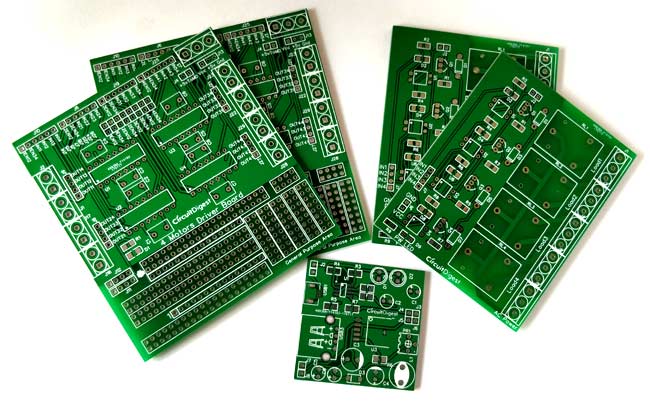Ultra-high speeds on flex and rigid-flex PCB board are inevitable as these boards are increasingly used in electronics. These systems also require ground planes for isolation and to separate RF and digital references for wireless protocols. High speeds and frequencies present the potential for signal integrity problems, many of which are related to the location and geometry of ground planes in a PCB board. A common way to provide a consistent 0 V reference on flex and rigid-flex boards is to use a hatched or grid-like ground plane on the flex ribbon. This provides a large conductor that can still provide shielding over a wide frequency range, while still allowing the flexible tape to bend and fold without creating too much rigidity. However, signal integrity issues arise in two areas: ensuring consistent trace impedance, shielding and isolation, and preventing fiber-braid-like effects in hatch structures.

Grid Ground Plan Design
In a basic sense, hatching works the same as any other ground plane. It is designed to provide a consistent reference so that traces can be designed to have the desired impedance. Any common transmission line geometry (microstrip, stripline, or waveguide) can be placed in a rigid-flex or flex PCB board with a meshed ground plane. Placing a hatched copper area on the surface layer of the flex tape provides nearly the same effect as solid copper at low frequencies. Common configurations for stripline and microstrip routing on flex tape with mesh ground plane. This mesh can be used on rigid boards, but I've never actually seen it, and no client has asked for it. Instead, a mesh pattern is used in a flex/rigid-flex board to balance the need for impedance control with the need for reasonably flexible tape.
Impedance control
One option for using single-ended or differential pairs is to place solid copper in the plane layer just below the traces and place the mesh elsewhere in the circuit. If routing becomes very dense then you will need to use meshes everywhere. If you choose to use mesh, you will have more flexibility, but the shield isolation will be lower and the impedance control conditions will change. The mesh plane structure has two geometric parameters: L and W. These two parameters can be combined as a fill factor or as a fraction of the mesh area covered by copper. Changing these parameters has the following effect: Assuming other parameters remain the same, opening the mesh area (by increasing L to increase mesh openings) increases the impedance. This also makes the ribbon easier to bend (with less force). Increasing W while keeping other parameters constant closes the mesh area and thus increases the impedance. This also makes the ribbon pattern harder to bend (with more force). Other parameters that control the impedance of standard geometry have the same effect when using a meshed ground plane. Once you get to high frequencies, you'll excite non-EM modes around the transmission line, and you might even see a fiber weave-like effect.
Is there a fiber weave effect in the Flex ribbon?
This is where grid ground planes on PCB boards are very interesting, as the grid pattern can start to resemble the glass weave pattern used in FR4 and other laminates. As a result, we are now back to a situation where we have to worry about the effect of fiber weaving in a normally smooth, relatively uniform substrate. These effects occur when the bandwidth of the traveling signal overlaps with one or more resonances in the mesh. For L = 60 mils on polyimide, the order resonance will be 50 GHz. Whether on rigid PCB boards or flexible PCB board substrates, these hatch structures can generate strong radiation as digital signals travel along the tracks of the grid ground plane. As more Flex applications open at higher frequencies, for some reason, I would expect these effects to be worse in a Flex ribbon with a grid ground plane.
High Q resonance
Just like in a conventional glass woven substrate, the meshes form a cavity structure that can support resonance when excited at a specific frequency. These resonant cavities in the grid ground plane will have very high Q values due to the high conductivity of the cavity walls (copper). Therefore, there will be lower losses and higher Q resonance. This results in increased cavity emission and resonant power losses.
Open mesh with low isolation
A mesh ground plane usually ensures that any radiated EMI from the fiber braid cavity is emitted along the edge of the board. Since the mesh has open cavities, there is less isolation, and can also radiate along the surface of the flexible ribbon. This has the opposite effect: while the trace is more prone to radiate, it is also more susceptible to external EMI. To solve these problems, use a tighter mesh, just like you would use a tighter glass weave to prevent the fiber weave effect. Flexible and Rigid-Flex PCB board will continue to be part of the PCB board space and become more advanced with newer manufacturing capabilities.